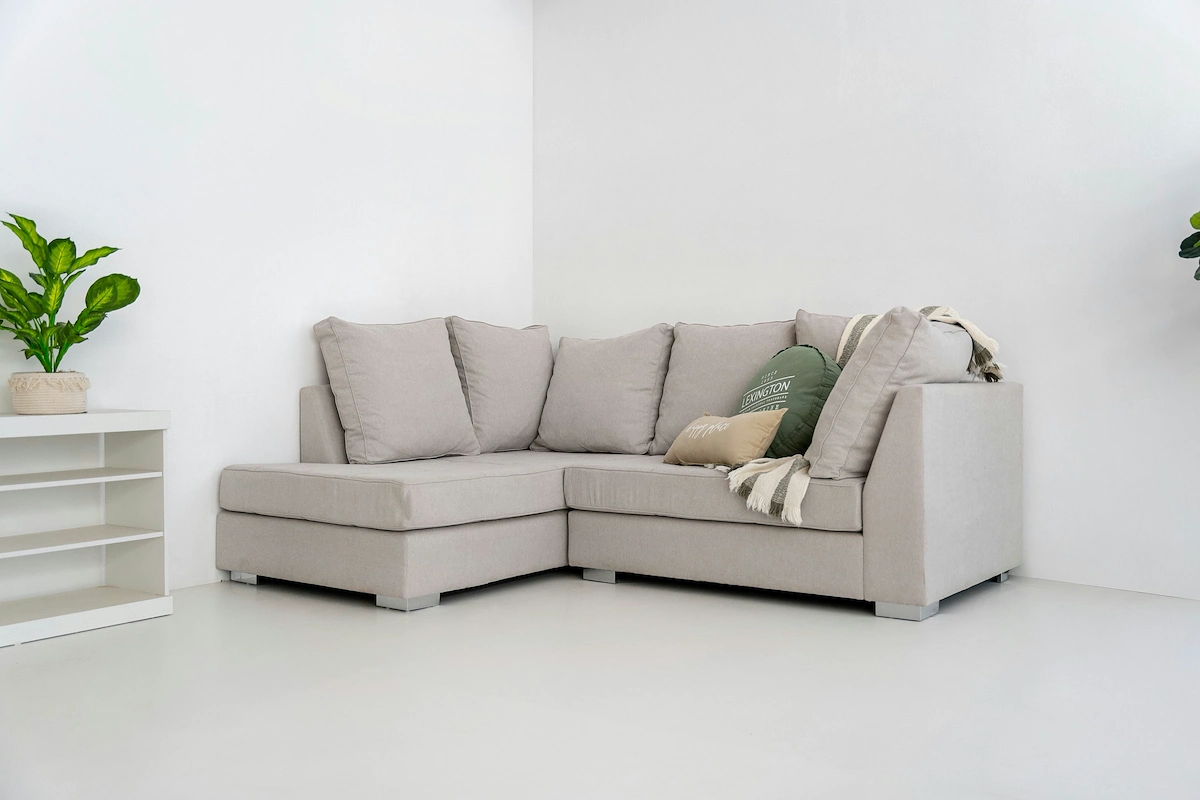Starting a furniture flipping business is an exciting venture that combines creativity and craftsmanship with business savvy. The low startup costs make it an accessible field, but turning a real profit requires a sharp eye for deals and a solid business plan.
This guide will take you through the practical steps of sourcing unique pieces, establishing your pricing, obtaining the right permits, and finding your first customers to help you launch a successful furniture flipping business in the U.S.
Step 1: Plan your business and validate your idea
Begin by researching your local market. Visit flea markets, thrift stores, and estate sales to see what furniture styles are available and their asking prices. Also, browse Facebook Marketplace and OfferUp to gauge what sells quickly in your area.
A frequent misstep is buying a piece with hidden structural damage. Before you purchase anything, thoroughly inspect joints, drawers, and legs. A cheap dresser with a warped frame can quickly erase your profit margin through time-consuming repairs.
Analyze the competition and find your niche
Identify 5-10 successful furniture flippers on platforms like Etsy and Instagram. Analyze their pricing, the quality of their photos, and how they describe their pieces. This helps you understand what customers expect and where you can stand out, whether through a unique style or superior staging.
Estimate your startup costs
Your initial investment can be modest. Plan for about $100-$500 to acquire your first few pieces. You should also budget $150-$300 for supplies like sandpaper, paint, brushes, and wood filler. Setting aside this initial amount helps you begin without immediate financial pressure.
Here are 3 immediate steps to take:
- Scout two local thrift stores and one flea market to note popular styles and prices.
- Follow five furniture flippers on Instagram to analyze their photography and descriptions.
- Create a startup budget for your first three flips, including inventory and supply costs.
Step 2: Formalize your business and get licensed
You can begin as a sole proprietor, which combines your personal and business finances. For better protection, consider forming a Limited Liability Company (LLC). An LLC separates your personal assets from business debts, a smart move as you grow.
Filing for an LLC typically costs between $50 and $500, depending on your state. This structure offers pass-through taxation. This means profits are taxed on your personal return, which helps you avoid the double taxation common with corporations.
Secure the right permits
First, get an Employer Identification Number (EIN) from the IRS website. It is free and you will need it to open a business bank account. Next, apply for a state-issued Seller’s Permit, sometimes called a Resale Certificate.
This permit lets you buy inventory tax-free, but you must collect sales tax from customers. Forgetting to remit this tax is a mistake that brings heavy penalties, so register with your state's Department of Revenue right away.
Finally, check with your city or county clerk for a local business license. These usually cost $50-$100 per year and can take a few weeks to process. This final step makes your operation fully compliant.
Here are 3 immediate steps to take:
- Apply for a free Employer Identification Number (EIN) on the IRS website.
- Research your state's Seller's Permit requirements via its Department of Revenue.
- Open a dedicated business bank account to keep finances separate.
Step 3: Protect your business with insurance
Understand your insurance needs
General Liability Insurance is your first line of defense. It covers claims if a customer is injured by your work or if you cause property damage during a delivery. A $1 million policy is standard and typically costs between $400 and $700 per year.
Next, consider Business Property Insurance to protect your tools and inventory from theft or damage. If you use your vehicle for pickups and deliveries, you will also need a Commercial Auto policy. Many people assume their personal auto insurance covers them, but most policies exclude business activities.
As your business grows and you hire help, you will need Workers' Compensation insurance. This is a legal requirement in most states. Professional liability, which covers claims of negligence, is less common but worth a look if you offer design advice.
You might want to look at providers that specialize in small businesses. Companies like Hiscox, The Hartford, and Next Insurance understand the risks for artisans and can offer tailored quotes online in minutes.
A unique risk in this field is an unexpected chemical reaction between a new finish and old paint, which could ruin an expensive piece. Your insurance provides a safety net for these specific, unforeseen problems.
Here are 3 immediate steps to take:
- Request a quote for a $1 million general liability policy.
- Review your personal auto insurance for business use exclusions.
- Compare quotes from two small business insurers, such as Hiscox or Next Insurance.
Step 4: Set up your workspace and get equipped
Your garage or a spare basement room can work well if you have at least 150 square feet. Proper ventilation is non-negotiable. You will need open windows or a fan system to handle fumes from paint and strippers safely. Poor airflow is a common oversight that creates health risks.
If a home setup is not an option, look for a small workshop in a light industrial zone. When you review a lease, ask for a one-year term instead of a longer commitment. This gives you flexibility as your business finds its footing.
Gather your core equipment
You do not need a full woodshop to start. Focus on a few key items. An orbital sander ($50-$150) will save you countless hours. Also, get a quality respirator mask ($30-$50) and a good set of paint brushes ($30-$60). Cheap brushes often shed bristles into your finish.
For supplies like unique hardware or specialty finishes, you can explore online retailers like Rockler and Woodcraft. These stores do not have minimum order requirements, which is perfect when you buy for single projects.
Here are 3 immediate steps to take:
- Check your local zoning ordinances for home business regulations.
- Create a shopping list for your initial equipment, with prices for an orbital sander and respirator.
- Browse online suppliers like Rockler or Woodcraft to compare prices on finishes.
Step 5: Set up your payment processing
Most of your sales will require full payment upfront. For custom refinishing projects, it is a good practice to require a 50% non-refundable deposit. This covers your initial investment in materials and secures the client's commitment.
While cash works, many buyers expect to pay with a card. You need a reliable way to accept payments anywhere, whether at a flea market or upon delivery. This makes a mobile payment solution a key part of your setup.
For a furniture flipping business that needs to accept payments on-site or on-the-go, JIM offers a streamlined solution. With JIM, you can accept debit, credit and digital wallets directly through your smartphone - just tap and done.
At just 1.99% per transaction with no hidden costs or extra hardware needed, it's particularly useful for quick sales at markets. Many other processors charge between 2.5% and 3.5% plus monthly fees, so the savings add up.
- Get Started: Download the JIM app for iOS.
- Make a Sale: Type the sales amount, hit sell, and ask your customer to tap their card or device on your phone.
- Access Funds: Your money is available right on your JIM card as soon as the sale is done - no waiting for bank transfers.
Here are 3 immediate steps to take:
- Decide on your deposit policy for custom refinishing projects.
- Download the JIM app to review its features for on-the-go sales.
- Compare JIM's 1.99% transaction rate with one other payment processor.
Step 6: Fund your business and manage finances
Secure your initial funding
Most flippers self-fund their start. You can use personal savings or a business credit card with a 0% introductory APR. This approach avoids debt and gives you immediate access to funds for inventory. A card can also help build your business credit history from day one.
For larger needs, consider an SBA Microloan. These loans range from $500 to $50,000 and are offered through nonprofit lenders. Interest rates are typically 8-13%. You will likely need a personal credit score above 680 and a solid business plan to qualify.
Grants are less common for this business model but worth a look. Search for local small business or arts grants in your city. National programs like the Amber Grant for Women offer monthly awards, though competition is high. These require a compelling story about your business.
Manage your working capital
Plan to have $1,500 to $3,000 in working capital for your first six months. This covers inventory, supplies, and marketing costs. A frequent miscalculation is to forget the small expenses. Things like sandpaper, wood filler, and new hardware add up and can shrink your profit.
Track every dollar spent on each project in a spreadsheet. Record the purchase price, supply costs, and your time. This data shows you which flips are most profitable. It also helps you set smarter prices for future pieces and avoid projects with low returns.
Here are 3 immediate steps to take:
- Research one SBA-approved microlender in your state.
- Create a six-month budget that estimates costs for five flips.
- Set up a spreadsheet to track expenses for each project.
Step 7: Build your team and streamline operations
When to hire your first helper
You will likely start as a one-person show. Consider hiring part-time help once your revenue consistently tops $3,000 a month or you find yourself turning down good pieces because you lack the bandwidth. This is your cue to scale.
Your first hire is often a Workshop Assistant for heavy lifting, sanding, and deliveries. Expect to pay $15-$25 per hour. For occasional help, you might use a service like TaskRabbit to find someone for a specific job without a long-term commitment.
A frequent misstep is misclassifying your helper. Be sure you understand the difference between a 1099 independent contractor and a W-2 employee. The IRS has strict guidelines, and getting it wrong can lead to tax penalties.
Streamline your workflow
You do not need complex software. A simple project board on a platform like Trello can help you track each piece. Create columns for stages like "Sourced," "In Progress," and "Listed for Sale" to visualize your entire inventory and workflow.
For scheduling, use a digital calendar like Google Calendar. Block out specific days for sourcing trips, dedicated work sessions, and delivery windows. This creates a predictable routine and prevents you from overcommitting your time on any single task.
Here are 3 immediate steps to take:
- Create a job description for a part-time Workshop Assistant, outlining key tasks.
- Set up a free Trello board with columns for your flipping process.
- Review the IRS guidelines for distinguishing between an employee and a contractor.
Step 8: Market your pieces and find buyers
Master local online marketplaces
Start with free platforms like Facebook Marketplace and OfferUp. Your photos are your primary sales tool. Use natural light near a window and shoot from multiple angles. A common mistake is to post blurry or poorly lit pictures, which will get your listing ignored.
Write a detailed description. Include the piece’s dimensions, the materials used, and a brief story about its transformation. This transparency builds trust and answers questions upfront, which saves you time. Aim to post new items during evenings or weekends when user activity is highest.
Build a brand on social media
Use Instagram to showcase your work with before-and-after photos and short video reels of your process. This content helps you build a loyal following. Use a mix of 15-20 hashtags, combining broad tags like #furnituremakeover with local ones like #chicagovintage to attract different buyers.
Once you have a few sales, you can create an Etsy shop. While Etsy charges listing fees and a 6.5% transaction fee, it gives you access to a national audience actively searching for unique furniture. High-quality photos and keyword-rich titles are vital for visibility on the platform.
Here are 3 immediate steps to take:
- Stage and photograph one finished piece, taking at least five photos from different angles.
- Write a detailed description for a Facebook Marketplace listing that includes dimensions and materials.
- Research and list 15 relevant hashtags for Instagram, including 5 that are specific to your city or region.
Step 9: Price your furniture for profit
A straightforward pricing model is to multiply your total costs by three. If you spend $50 on a dresser and $25 on supplies, your total cost is $75. A 3x markup puts your list price at $225. For high-demand or unique items, a 4x or 5x markup is reasonable.
Also, consider value-based pricing. A mid-century modern piece from a known brand will command a higher price than a generic one, regardless of your costs. Research the original brand and style to see if you have a hidden gem.
Find your pricing sweet spot
To check your prices against the market, search for comparable sold items on Etsy and Facebook Marketplace. Looking at what pieces actually sold for gives you a much more realistic baseline than active listings. Note the condition and quality of those pieces.
Many new flippers forget to pay themselves for their time. Set an hourly rate for your labor, even if it is just $20 per hour, and add it to your costs. This ensures you are running a profitable business, not an expensive hobby.
Here are 3 immediate steps to take:
- Use the 3x markup rule to price a hypothetical $40 chair that required $20 in supplies.
- Find three comparable sold dressers on Facebook Marketplace to analyze their final sale prices.
- Set a target hourly rate for your labor to factor into your future cost calculations.
Step 10: Ensure quality and scale your operation
Develop a quality control checklist
Before listing any piece, perform a final inspection. Ensure all drawers slide smoothly and doors close properly. Check that legs are level and the frame is sturdy with no wobbles. The finish should be even and fully cured, with no tacky spots or drips.
Many new flippers make the mistake of rushing this final stage. A piece that looks great but functions poorly leads to unhappy customers. Run your hand over all surfaces to feel for rough patches and test all hardware to confirm it is secure.
Know when to grow
Once your quality is consistent, you can plan for growth. Consider scaling when you consistently sell 5-7 pieces a month and your profit exceeds $3,000. If you spend over half your week on deliveries and admin, it is time to hire an assistant.
If your workspace feels cramped with more than three active projects, it is time to look for a dedicated workshop. As your finances become more complex, you might upgrade from a spreadsheet to software like QuickBooks Self-Employed for better tracking.
Here are 3 immediate steps to take:
- Create a five-point quality inspection checklist for your finished pieces.
- Set a monthly revenue goal, like $3,000, as your trigger to consider hiring help.
- Explore QuickBooks Self-Employed to see if it fits your future financial needs.
Starting your furniture flipping business is a journey of creativity and smart decisions. Remember that the most successful flips often come from pieces others overlook. You have the steps, now go find that first hidden gem and begin its new story.
When you make that first sale, getting paid should be simple. JIM turns your phone into a card reader to accept payments on the spot for a flat 1.99% fee, with no extra hardware. Download JIM and you are ready for business.















